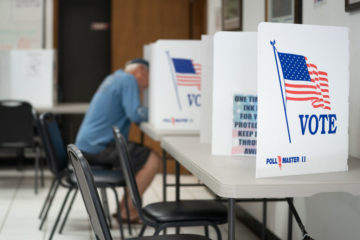
Chris Maisano in Jacobin:
Donald Trump’s shocking 2016 victory inaugurated a cottage industry of commentary on the political behavior of the “white working class,” much of it useless. Fortunately, Kitschelt and Rehm applied the insights of their 2014 work to the question of changing patterns of partisanship among white voters in the United States, and illuminated the ways income and education interact in the process of political realignment.
In a key 2019 study on realignments in white partisan support, Kitschelt and Rehm describe the US electorate in terms of income (low vs. high) and education (low vs. high) and model their interaction. The dramatic expansion of higher education, they contend, has disrupted the traditional New Deal alignment and shaped the political demands of four main groups: low-education/low-income, low-education/high-income, high-education/low-income, and high-education/high-income.
The main conclusion of the article is that the two parties’ core constituencies during the New Deal order (low-education/low-income voters for the Democrats, high-education/high-income voters for the GOP) have become swing groups, while the former swing groups (high-education/low-income for the Democrats, low-education/high-income for the GOP) have become the core.
Lower-education voters of all income levels are shifting toward the Republicans at different speeds, while lower-income voters are split. Lower-income voters with higher levels of educational attainment are strengthening their identification with the Democrats, while those with both lower income and fewer credentials — particularly but not exclusively among white voters — can be swayed to vote for the Right depending on a candidate’s electoral appeal. Trump won a significant amount of support from low-education, low-income white voters in 2016, they contend, not just because of his reactionary views on governance and citizenship, but because he was widely perceived as not a typical Republican on economic policy issues.
More here.
